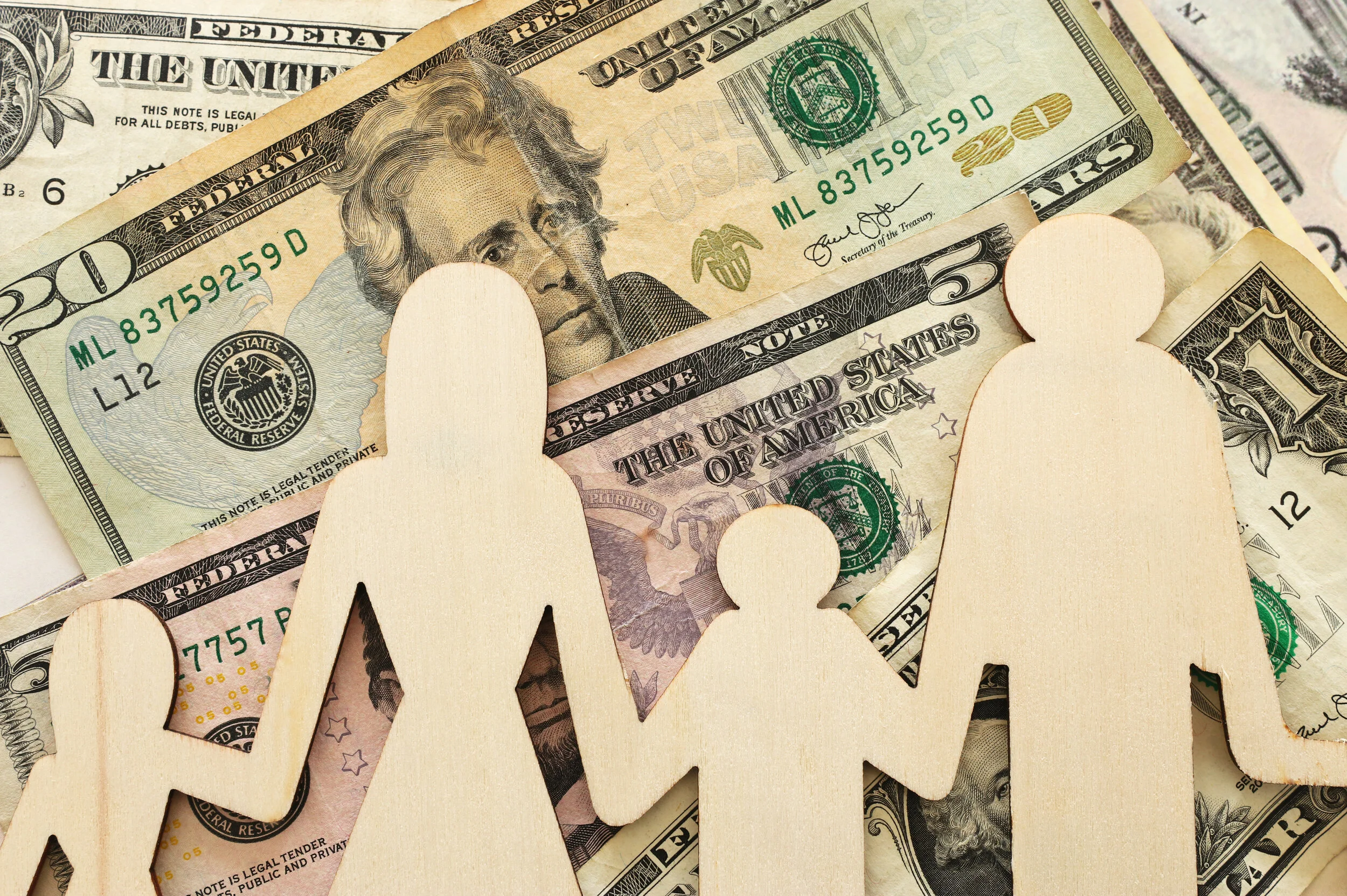PWBM estimates that President Biden’s FY2022 budget proposal would increase spending by $6.1 trillion and increase revenue by $3.9 trillion over the 2022-2031 budget window. By 2050, we project that the President’s budget proposals would decrease public debt by 5.1 percent and decrease GDP by 1.5 percent relative to current law.
Effects of President Biden’s Unauthorized Immigrant Legalization Proposal on SNAP and Payroll Tax
PWBM projects that the legalization provisions of the U.S. Citizenship Act proposed by President Biden would increase per capita spending on the Supplemental Nutrition Assistance Program (SNAP) by 1.2 percent in 2030 and 0.8 percent 2050 relative to the current policy baseline. Per capita payroll taxes would decrease by 0.1 percent relative to the current policy baseline.
Interactive Tool: Options to Reduce the National Debt
This interactive page presents estimated budgetary, economic, and distributional effects for a wide array of policies and policy packages that would reduce the federal debt.
Republican and Bipartisan Infrastructure Proposals: Budget and Economic Effects
We estimate that Sen. Capito’s $330 billion infrastructure package, funded by user fees over 8 years, would increase GDP by about 0.05 percent in 2050. A $579 billion infrastructure investment being considered by a bipartisan group of senators, would increase output in 2050 by 0.1 percent if funded by user fees or have roughly zero net effect on GDP if deficit financed.
President Biden's American Families Plan: Budgetary and Macroeconomic effects
PWBM projects that the American Families Plan (AFP) would spend $2.5 trillion, about $700 billion more than the White House’s estimate, over the 10-year budget window, 2022-2031. We estimate that AFP would raise 1.3 trillion in new tax revenue over the same period. By 2050, the AFP would increase government debt by almost 5 percent and decrease GDP by 0.4 percent.
Map: Income Underreporting by State
We estimate a state-level decomposition of income underreporting in the US to be over $1.3 trillion for tax year 2018. We present these numbers separately by income type (wages and salaries, partnerships and S-corps, capital gains and dividends, interest, schedule C, and other). Most (69 percent) of underreported income is underreported Schedule C (sole proprietorship) income.
Revenue Effects of President Biden’s Capital Gains Tax Increase
PWBM estimates that raising the top statutory rate on capital gains to 39.6 percent would decrease revenue by $33 billion over fiscal years 2022-2031. If stepped-up basis were eliminated—as proposed in President Biden’s campaign plan—then raising the top rate to 39.6 percent would instead raise $113 billion over 2022-2031.
President Biden’s $2.7 Trillion American Jobs Plan: Budgetary and Macroeconomic Effects
PWBM projects that the American Jobs Plan proposed by President Biden would spend $2.7 trillion and raise $2.1 trillion dollars over the 10-year budget window 2022-2031. The proposal’s business tax provisions continue past the budget window, decreasing government debt by 6.4 percent and decreasing GDP by 0.8 percent in 2050, relative to current law.
Budgetary and Economic Effects of Senator Elizabeth Warren’s Wealth Tax Legislation
PWBM projects that the Ultra-Millionaire Tax Act of 2021, introduced by Senator Elizabeth Warren, would raise $2.1 trillion over the standard 10-year budget window (2022-2031) under scoring conventions used by government agencies. Incorporating the effects of enhanced IRS enforcement, our projection rises to $2.4 trillion over 2022-2031 and $2.7 trillion over 2023-2032. Also incorporating macroeconomic effects of the Act reduces estimated revenue to $2.0 trillion over 2022-2031 and $2.3 trillion over 2023-2032. We estimate that the Act would reduce GDP by 1.2 percent in 2050.
Incentive Effects of the Romney and Biden/Neal Child Tax Credit Proposals
This post compares effective marginal tax rates (EMTRs) under the Family Security Act proposed by Sen. Romney and the Child Tax Credit (CTC) expansion proposed by Rep. Neal and President Biden. Married families with children and less than $45,000 in income would face EMTRs 4.4 percentage points higher under the Romney proposal and 6 percentage points higher under the Biden/Neal proposal.
How Are Capital Gains and Dividends Taxed?
This post is part of a series that explains tax concepts. The highest 1 percent of earners are responsible for 71 percent of capital gains realizations. President Trump has proposed lowering the top rate on income from capital gains and dividends, while former Vice President Joe Biden has proposed increasing the top rate for taxpayers with more than $1 million in income.
Analyzing President Trump’s Proposed Capital Gains and Dividend Tax Cut
PWBM estimates that reducing the top preferential rates on capital gains and dividends from 20 percent to 15 percent will cost $98.6 billion dollars over the ten year budget window. This tax cut will only benefit tax units in the top 5 percent of the income distribution, with 75 percent of the benefit accruing to those in the top 0.1 percent of the income distribution.
Dynamic Distributional Analysis of the Biden Platform
PWBM uses dynamic distributional analysis to evaluate the effects of the Biden platform on different age and income groups. We find that working-age individuals in the bottom 40 percent of taxable income benefit the most due to expanded health insurance, increases in housing subsidies, and lower cost of prescriptions in the Biden platform, while young, high-income individuals and wealthy retirees see net losses due to tax increases and lower returns on their savings.
Presidential Candidate Joe Biden’s Proposed Child Tax Credit Expansion
Presidential candidate Joe Biden recently announced a proposal to temporarily expand the Child Tax Credit (CTC). We find that this proposal would cost $110 billion if implemented solely for calendar year 2021 and would cost $1.4 trillion over ten years if extended permanently. While higher income households are more likely to have qualifying children and would see larger average tax cuts ($1160 for the 90-95th percentile), lower income groups would see the largest relative benefit, with after-tax incomes increasing by 9 percent for the bottom quintile.
PWBM Analysis of the Biden Platform
Presidential candidate Joe Biden’s campaign has released a substantial list of policy proposals. PWBM finds that over the 10-year budget window 2021 – 2030, the Biden platform would raise $3.375 trillion in additional tax revenue and increase spending by $5.37 trillion. Including macroeconomic and health effects, by 2050 the Biden platform would decrease the federal debt by 6.1 percent and increase GDP by 0.8 percent relative to current law. Almost 80 percent of the increase in taxes under the Biden tax plan would fall on the top 1 percent of the income distribution.
Business Taxation in the Biden Tax Plan
We use PWBM’s new dynamic model enhancement of the business sector to analyze several foreign and domestic business taxation provisions from the Biden tax plan. While raising the effective tax rate on foreign profits increases domestic capital, wages, and GDP, provisions that raise domestic business taxes have the opposite effect—when combined, these business tax provisions decrease the capital stock by 0.21 percent and decrease wages by 0.69 percent in 2050.
New Charitable Deduction in the CARES Act: Budgetary and Distributional Analysis
The CARES Act establishes a new, temporary charitable deduction (limited to $300) in tax year 2020 for taxpayers who claim the standard deduction. PWBM projects that this provision would cost about $2 billion and would have little effect on total donations. More than half (53 percent) of the benefit would accrue to families in the 60th to 90th percentiles of the income distribution.
Options for Emergency Lump-Sum Cash Payments in Response to Coronavirus: Budgetary and Distributional Analysis
We present budgetary and distributional estimates for three potential versions of the lump-sum payment that President Trump announced earlier today. All three options increase the after-tax income of low income households the most. However, higher-income households have more children on average and would receive larger cash payments unless additional adjustments are made.
President Trump’s Payroll Tax Holiday: Alternative Distributional Analysis
We expand our previous analysis of President Trump’s proposed payroll tax holiday by considering two scenarios for how the employer side of the tax cut would be distributed: either to the full benefit of business owners and corporate equity holders (“profits rise”) or to the full benefit of workers (“wages rise”). When profits rise, the top 1 percent of families by income receive about 29 percent of the total payroll tax cut, compared to about 4 percent of the total cut when wages rise.
President Trump’s Payroll Tax Holiday: Budgetary, Distributional, and Economic Effects
In response to the economic effects of the coronavirus, President Trump has proposed a payroll tax holiday that would temporarily eliminate all Social Security and Medicare payroll taxes through December 31st, 2020. PWBM projects that this payroll tax holiday would cost $807 billion if the holiday were run from April 1 through December 31, 2020.
Households in the bottom 20 percent of the income distribution—those households with the highest willingness to spend their tax savings—would receive about 2 percent of the total tax cut and only a third of these households would see any tax savings due to low levels of taxable income. Tax savings would also accumulate slowly over time relative to direct government spending.
PWBM estimates that eliminating payroll taxes would have little net impact on the economy in the short run and would reduce the size of the economy by 0.1 percent in 2030 and 0.2 percent in 2050 due to additional debt.












